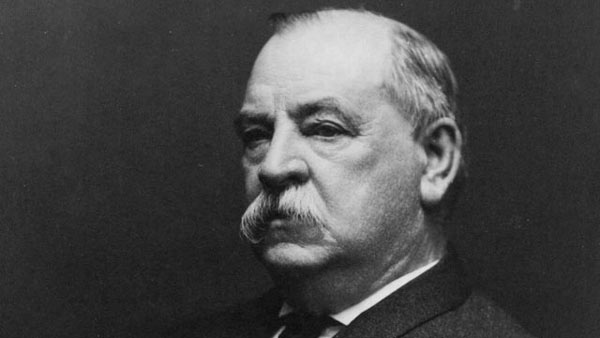Grover Cleveland |
|||||
 |
|||||
Grover Cleveland was born on March 18, 1837, in Caldwell, New Jersey. His family moved to New York when he was young, but he could not attend college because of his father’s death. Nevertheless, he studied hard, and in 1859 he was admitted to the New York Bar Association. Grover’s political career quickly blossomed in Buffalo, New York. In 1863, he became assistant district attorney; in 1871, he became sheriff; in 1881, he became mayor; and in 1882, he became governor of New York. In 1884, he defeated Republican James Blaine in the presidential race. In 1885, he entered office. During his first term as president, Grover enlarged the civil service and vetoed pension raids on the Treasury. In addition, the Statue of Liberty was dedicated and the American Federation of Labor was formed. Despite his popularity, Grover Cleveland was defeated by Benjamin Harrison is his bid for reelection in 1889. In 1892, Grover Cleveland defeated Benjamin Harrison in the popular election and became the first and only president to serve two non-consecutive terms as president (his two terms were separated by Benjamin Harrison’s presidency). Unfortunately for Cleveland, he entered his second term in a difficult position. The country was experiencing a money crisis brought about by a lowered gold reserve and questionable spending. Cleveland was unsuccessful in his attempt to thwart an impending depression and refused to interfere in business matters or rising unemployment. In 1894, an unemployed worker named Jacob Coxey mobilized an army of jobless workers who walked from the Midwest to Washington DC demanding unemployment relief and legislation. Cleveland rejected Coxie’s demands, and Coxie was arrested for trespassing. In 1896, the Democratic Party chose to nominate William Jennings Bryan as their presidential candidate rather than Grover Cleveland. Grover Cleveland died on June 24, 1908. He was honored on the United States $1,000 bill before it was taken out of circulation. |
|||||
Full Presidential Biographies |
|||||
| Click a president to learn more! | |||||
 |
 |
 |
 |
 |
 |
 |
 |
 |
 |
 |
 |
 |
 |
 |
 |
 |
 |
 |
 |
 |
 |
 |
 |
 |
 |
 |
 |
 |
 |
 |
 |
 |
 |
 |
 |
 |
 |
 |
 |
 |
 |
 |
 |
||||